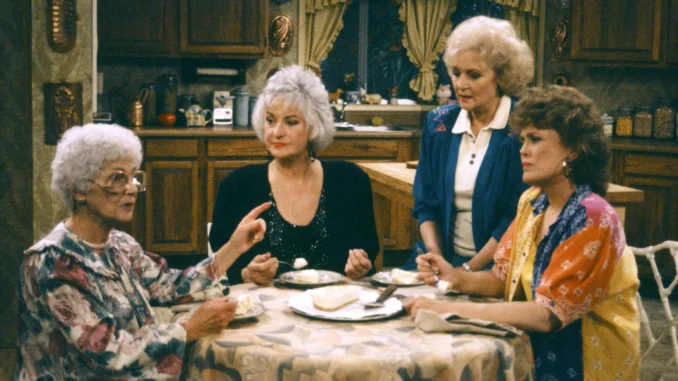
The Golden Girls remains one of television’s most beloved sitcoms, charming audiences with its witty humor and strong female ensemble. However, behind the scenes, the dynamics among the cast were not always as harmonious as the on-screen camaraderie suggested. Specifically, the relationship between Betty White, who played the sweet and naive Rose Nylund, and Bea Arthur, who portrayed the sharp-tongued Dorothy Zbornak, was marked by tension that occasionally boiled over into conflict.
The Chemistry of the Cast
The chemistry among the four leading ladies—Betty White, Bea Arthur, Rue McClanahan, and Estelle Getty—was a crucial factor in the show’s success. Their distinct personalities and comedic styles complemented each other beautifully, creating a dynamic that resonated with viewers. However, the same chemistry that made The Golden Girls a hit also led to clashes, particularly between White and Arthur.
Bea Arthur was known for her no-nonsense attitude and strong work ethic. She often took her role very seriously, viewing the show as a platform to address important social issues while delivering humor. In contrast, Betty White brought a more playful and whimsical approach to her character, which sometimes rubbed Arthur the wrong way.
The Infamous Incident
One of the most notorious incidents that highlighted the tension between the two actresses involved a particular scene in which Rose was meant to deliver a heartfelt monologue. Betty White, known for her improvisational skills and comedic timing, decided to add her own flair to the scene. This included some ad-libbed lines that, while funny, deviated from the script and disrupted the flow that Bea Arthur had envisioned.
Bea, who was meticulous about the script and its delivery, found this behavior infuriating. She believed that the integrity of the scene was compromised and that the comedic timing should adhere to the script’s original intent. In the midst of filming, Arthur reportedly snapped at White, calling her “a dumb blonde,” a comment that reflected both her frustration and the ongoing rivalry between the two.
Betty White’s Perspective
Betty White’s approach to comedy often involved spontaneity and a willingness to experiment. She cherished the collaborative nature of sitcoms and loved the idea of bringing new life to her character through improvisation. For White, comedy was about connection and laughter, and she often believed that the best moments came from genuine interactions.
In later interviews, White acknowledged the tension but emphasized her admiration for Arthur’s talent. She understood that their differences in approach stemmed from their unique comedic styles. While she preferred a more flexible script, she recognized that Arthur’s commitment to the original material was part of what made The Golden Girls great.
The Impact on the Show
Despite the occasional clashes, the tension between Betty White and Bea Arthur ultimately contributed to the richness of The Golden Girls. Their differing styles created a dynamic that kept the audience engaged. The tension added layers to their performances, allowing them to explore the complexities of their characters more deeply.
Moreover, the show’s writers often used the friction between Rose and Dorothy to enhance the comedic narrative. The playful banter and sharp exchanges between the characters became a hallmark of the series, reflecting the real-life personalities of the actresses. This dynamic not only entertained viewers but also highlighted the importance of strong female relationships, even amidst conflict.
The Power of Forgiveness
As with any long-term collaboration, the relationship between Betty White and Bea Arthur evolved over time. While their differences occasionally led to conflict on set, both actresses ultimately respected each other’s talents and contributions to the show. In interviews later in their careers, they often spoke fondly of their time together, emphasizing the bond they formed through their shared experiences.
Betty White, in particular, has always maintained a positive outlook on her relationships with her co-stars. She has spoken about how important it is to forgive and understand each other in the entertainment industry, where tensions can run high. Her ability to move past conflicts and appreciate the collaborative nature of acting helped maintain a sense of camaraderie among the cast.
The Legacy of The Golden Girls
The Golden Girls has left an indelible mark on television history, not just for its groundbreaking portrayal of older women but also for its exploration of friendship, love, and resilience. The show’s ability to tackle serious issues with humor and grace resonated with audiences and continues to influence comedic storytelling today.
The behind-the-scenes dynamics, particularly the relationship between Betty White and Bea Arthur, add depth to the show’s legacy. Their clashes remind us that even in a collaborative environment, differences in creative vision can lead to tension. However, it is also a testament to the power of respect, understanding, and the ability to find common ground.
Conclusion: A Complex Friendship
The tensions between Betty White and Bea Arthur on the set of The Golden Girls serve as a reminder of the complexities inherent in creative partnerships. Their differences in approach to comedy and performance led to memorable moments both on and off the screen. Despite any conflicts, the respect they held for one another ultimately contributed to the enduring success of the show.
As fans continue to celebrate The Golden Girls, it’s essential to acknowledge the behind-the-scenes stories that shaped its creation. The legacy of the show is not just in its humor or its iconic catchphrases but also in the real-life relationships that brought the characters to life. The stories of Betty White and Bea Arthur remind us that even amidst differences, friendship, creativity, and laughter can prevail, creating something truly special that resonates with audiences for generations.
